30 Ways to Build a Real Estate Content Marketing Strategy

Content marketing is 80% the same across every industry, and it's that remaining 20% that sets you apart from the rest of the world. If people in your niche aren't customizing their marketing efforts to the niche, you'll be able to outdo them and gain an advantage.
Today's post is written with that additional 20% in mind, specifically for the real estate business.
Real estate has three things that set it apart from other kinds of marketing.
- The high value. A vast majority of the marketing and sales content online is aimed at selling items worth 10s, 100s, or 1000s of dollars. Very little of it, comparatively, is worth five, six, or more digits of value. Real estate is one of the most significant purchases that most people will make in their entire life, and the fact it's such a high ticket item means that the investment into a long-term content strategy is a no-brainer. Real estate is also considered evergreen content, which means it's not going anywhere anytime soon.
- The depth. A real estate purchase is likely to be the single largest purchase an individual makes in their lifetime, short of another real estate purchase. It's a huge deal, which means buyers, sellers, and agents have a lot to contend with. More than nearly any other industry, conversion rates are low, research is high, and you need to split the difference.
- The regulations. While real estate isn't as regulated and reviewed as an industry like medicine or law, it's nevertheless subject to laws and rules that you must follow. These rules lead to prohibitions on certain kinds of marketing that might otherwise be effective.
Navigating these, and understanding them, is the key to realtors succeeding with a real estate content marketing strategy. That said, I'm not going to leave you hanging with just these generalities, and I have specific tips to help you out with your real estate content marketing. And, of course, if you want me to help you with your strategy or answer any of your questions, you can always drop me a line.
1. Visuals Matter
Virtually nothing is more important to the real estate industry than visuals. First impressions are essential for real estate photography, which you probably already know. They're also vital for your website. If your site looks like it's fresh out of 1998, or if you have a low-resolution set of images, or if you're just not investing in high-quality content visuals, you're going to leave a poor first impression.

Whether this means hiring a professional graphic designer or creating all of your blog images yourself with the same care as you do for your listings, get it done.
2. Infographics Rock
An extension of visuals, infographics can be an extremely compelling way to grow traffic and build exposure. It's also tricky because the big-name brands have covered all the essential real estate topics and statistics with custom graphics. Rather than fight them, tailor them; look for similar data sets for your local region, and develop infographics of your own for that specific audience.

Properly designed and syndicated infographics have a habit of going viral - one of our most shared blog posts is an infographic that we created. They are not to be underestimated!
3. Events are Critical
In real estate, events are often central to the selling process. Whether it's an open house or a listing event, it's hugely important.

You can do the same thing digitally, with online-hosted events, digital walkthroughs, and more.
4. Use Modern Tech
Recently, you may have seen that many modern real estate listings use more than just simple photography to showcase a property. It doesn't take much to build your own AR or VR virtual tours of a space and add those elements to your real estate website. Modern technology has advanced to the point that you can often do this with a phone.

Invest in it, and then promote that you're using cutting-edge technology as a selling point.
Sometimes, the classics are classic for a reason. Newsletters are among the best possible channels to build up an audience. You have direct access to entire groups of interested prospective buyers. Use your newsletter to keep them warm and engaged, and test different kinds of content creation to see which is most attractive to different demographics. Consider publishing a weekly or monthly newsletter with updated listings and changes in your local market. If you use Mailchimp, you may be able to take advantage of their "RSS-to-Email" feature, which draws from your latest blog posts and turns them into emails automatically.
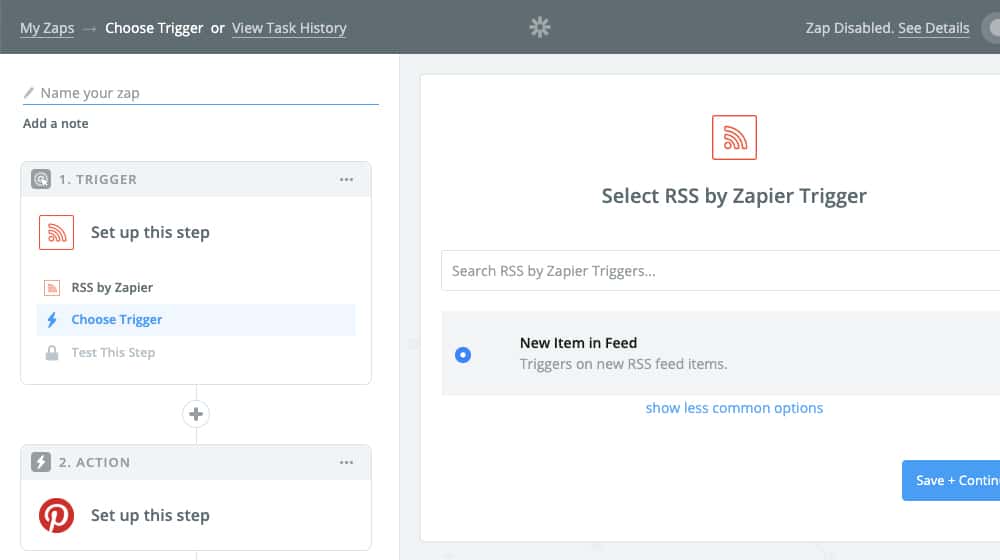
You should remember to test and optimize your email marketing campaigns - not all emails are created equally, and you want to provide as much value as possible to keep your open rates high over time.
6. Great Mobile Experience is Required
More and more, the younger generations are using their phones for everything, and they're increasingly entering the category of home buyers and homeowners. Your website needs to be usable on mobile, including everything from your content to your listings to your advertising.

There's no negotiating this: an excellent and fast mobile experience is essential to modern real estate marketing.
If you don't have a great mobile experience, you should start there first!
7. Integrate with Real Estate Apps
Chances are, you're not going to be building your listing app. You'll have listings on your platforms of choice, be it Zillow, Trulia, Redfin, MLS, or another. Make sure your website integrates with these apps.
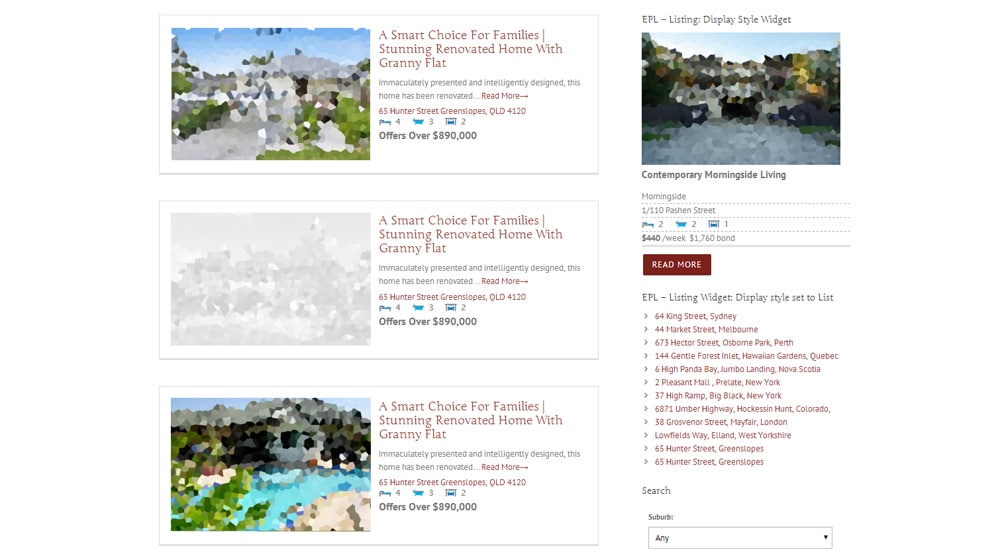
Link back and forth, integrate listing data from APIs, and leverage dynamic listing information in the content you write. You'll likely need to hire a developer for this, but it's well worth the investment.
8. Solicit Testimonials
Testimonials are some of the most powerful marketing tools available to you as a real estate agent. In addition to your usual channels (agent lists, Yelp, LinkedIn, Facebook Ads, and other social networks), you should strive to solicit testimonials for your website.
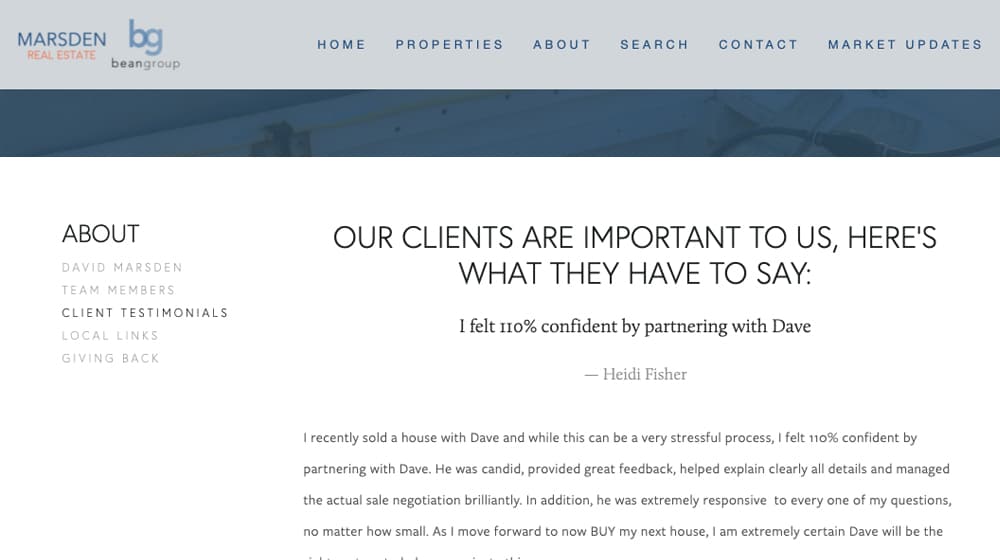
One excellent marketing technique is to create curated user stories. Interview or sit down and chat with successful buyers and sellers you've worked with, record and convert their story into a compelling narrative, and use it as an emblematic example of what you can achieve.
9. Focus on Local SEO
It should be a no-brainer that you need to focus on local SEO for your real estate content marketing. Think of the different ways people refer to your area: city name, county name, region name, colloquial and nicknames, etc. Then, leverage those as part of keywords in your regional marketing.

Not only does this help undercut the largest sites, but it also lets you differentiate yourself from regional competitors.
10. Become a Resource
One core offering of all of the major real estate sites is evergreen resources. They have detailed guides on explaining mortgages and interest rates, the home buying or selling process, home inspections, and all the rest. How can you do the same thing and somehow compete?
Leverage local. Instead of writing a guide on how mortgages work, write a guide about how mortgages work in your area. Fill your content marketing ideas with specific content, such as local banks, financial institutions, and regional incentives buyers can use. Unique content makes content marketing easy, and using these tiny bits of local information is very powerful at helping them surface for searches in your area.
11. Focus on Evergreen Content
Out of the 12 different types of content, evergreen content is the best for long-term content marketing, as it maintains its value over the years with minimal effort.

Try to make sure the majority of what you produce has staying power and can be kept up to date with a minimal amount of effort. This step will require you to brainstorm and research buyer pain points and the articles already written about these subjects (if any). It's better to invest your time into great content with staying power than into trends and recent events.
12. Network with Tertiary Influencers
You can't likely network with other real estate agents and still compete against them. Instead, network with influencers in related niches that a home buyer or seller would want to contract. Examples include interior designers, decorators, contractors for renovations, home inspectors, and more.

Create co-branded content with these people. Creating local resource content co-branded with these companies and individuals will give you resources for pulling in and adding value to clients, as well as helping refer people back and forth.
13. Develop Storytelling
Creating a narrative is always better and more attractive than dry, bland content. Tell a story with your content, even if you have to make one up. Giving your readers something they can latch onto will compel them to build trust with you more than if you present everything in the abstract.
14. Always Be Available to Contact
While it's not necessarily part of the content in content marketing, you need to be available to be contacted as much as possible. Open up more channels, including your phone, a live website chat, email, a contact form, and more.

Any method you can use, make use of it, especially if it helps you find a client you wouldn't otherwise have attracted.
15. Emphasize Referrals
As mentioned, referrals are one of the best ways to get new clients and contacts in real estate. You can set up a referral program, but you can also encourage referrals via word of mouth using a range of possible incentives. You can also set up formalized referral programs with those tertiary influencers mentioned above.
Using social media is critical for modern marketing, pretty much no matter what your business is. Real estate agents can benefit from using major platforms like Facebook and Twitter.

They can bolster storytelling, individual listings, and specific resources by using graphical and video content through Instagram, Pinterest, and even TikTok.
17. Become a Local Source
Part of dominating your region in real estate is becoming one of the top-level local resources. You can do this online by becoming a frequent tipster or contributor to local publications, contacting journalists with local opinions, and writing more local content they can use.

Some resources, like HARO, may be able to help if your local journalists participate.
18. Invest in Video Production
Video is no longer the wave of the future; it's the content of the present. Creating video content to post on channels like Facebook, Instagram, and YouTube will help you attract the most interested potential clients.
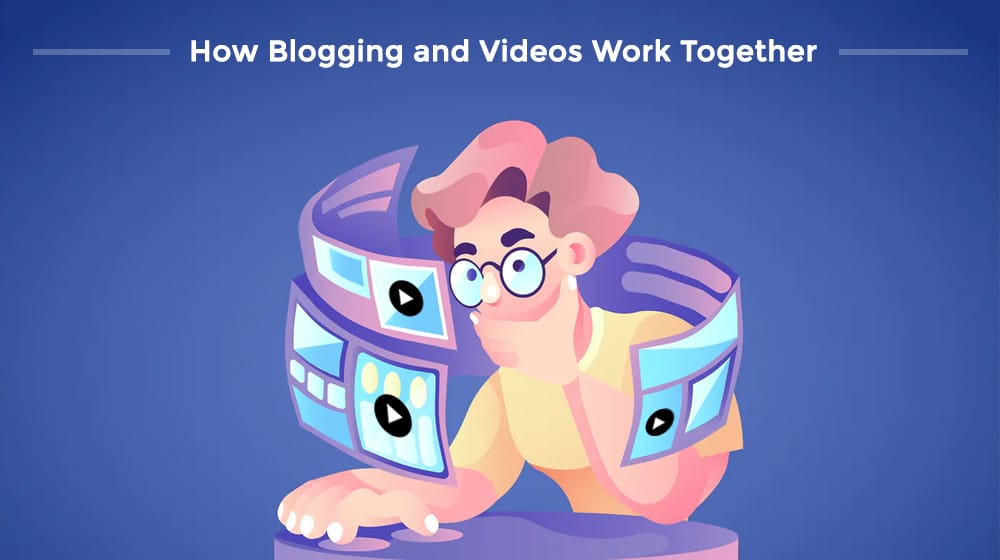
The trick is to help with evergreen information they want to see. Luckily, you should already be producing that through other channels, and it's a simple matter to convert content from one format to another.
19. Address Common Customer Concerns
Clients will have shared concerns. Some will be general to the home buying process, but others will be specific to your region, method, or area. Consider recording these concerns and creating content based on them.
20. Keep in Touch with Past Customers
We all know the standard techniques for keeping old clients warm, like holiday cards, but you can do a similar thing with content marketing. When you close a deal, add those customers to a newsletter aimed explicitly at residents of your local area.

Neighborhood resources, organizations, events, and more can be a fabulous way to remind people who helped them secure their home purchase.
21. Pay Attention to Diversity
Remember that diversity is increasingly important with modern marketing. Consider the concerns of a diverse audience. People who want to move to your area have specific problems relating to how well their neighborhood will accept them. Strive to create a diverse region and engage in discussions of the most common issues to your potential clients.
22. Integrate Accessibility Options
Remember that not everyone looking to buy a home is able-bodied. Simple things like adding alt text to images and creating podcast versions of your blog posts can go a long way towards helping attract these users who might otherwise be left unsure of how to proceed.

Just make sure you're prepared to work with them once you've hooked them.
23. Build Interstate Partnerships
One technique you can use in real estate is reverse listing searches. Sites like Zillow allow you to see the agents who have listed homes for sale, indicating that people are looking to move. You can reach out to them and let them know about your listings to see if they can refer their sellers to your area. You can also network with them to provide cross-region content. "Moving from X to Y state" can be a compelling topic with a niche interest.
24. Develop a Lead Magnet
Lead magnets are compelling pieces of content that are aimed at attracting interested users. A "Complete Guide to Buying a Home in <Region> for the First Time" can be a great way to attract people looking to purchase in your area.

Invest in top-tier content, and you'll be able to promote it for years while generating specifically interested leads. Lead generation content should be equipped with tested and relevant calls to action as well. We wrote a guide on creating effective calls to action for your real estate blog, which you can read here.
25. Hit the Ground Running
If you don't already have a blog, be prepared to hit the ground running when you set one up. Create and schedule several months' worth of content ahead of time, and create a backlog of content, so you aren't starting with an empty website. The more you have prepared, the faster your site will begin to grow.
26. Syndicate Real Estate Content
Much of your content can be syndicated across multiple locations. Publish new content on your site first, but syndicate it on sites like Medium, HubPages, and local publications.
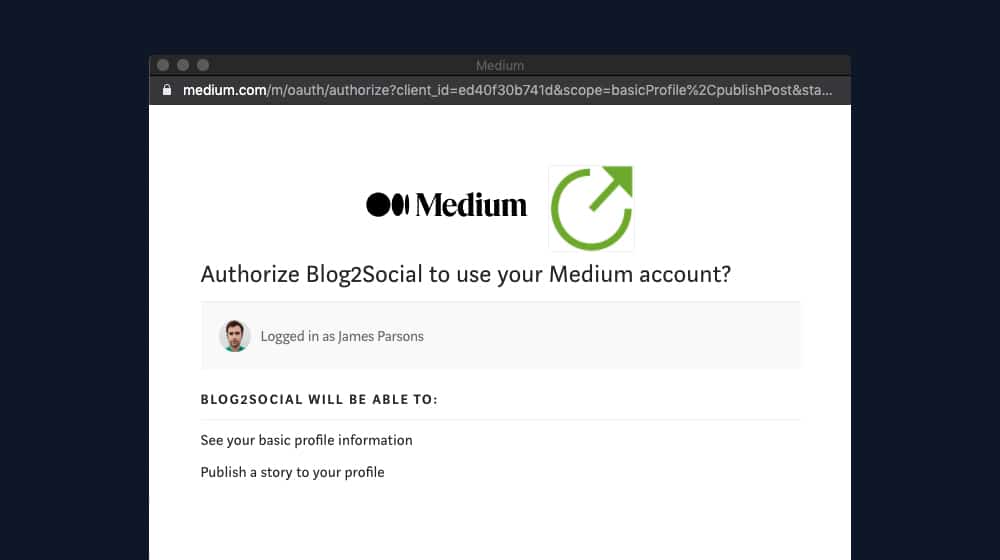
This strategy grows your exposure and doubles or triples the value of a single piece of content. Some WordPress plugins can even help you syndicate your content on a schedule automatically.
27. Repurpose Content to Multiple Formats
One blog post is never just one blog post. You can take one blog post and turn it into:
- A script for a podcast.
- A script for a video.
- An outline for an infographic.
- A series of shorter posts for social media.
- A longer version for a lead magnet.
There are a ton of options available. Don't let your investment in your content stop with just one blog post.
28. Emphasize Brand Awareness
You'll be producing a ton of content, so make sure everyone can easily attribute that content to you. Lace it with your brand and brand references. Attribute it to yourself or your agency, add branding to your images and consider developing a consistent color scheme and style. These little touches can help a lot.
29. Look for Gaps in Media Coverage
You're already targeting local, so look for gaps in local coverage. Do other agents in your area fail to create video and audio content? Are they not making partnerships?

All of the techniques above can also be the subject of competitive research, revealing gaps in your coverage that you can leverage.
30. Use Tracking to Remarket to Visitors
Don't forget to ensure you have tracking codes like Facebook's pixel and Google Analytics installed on your site. That way, you can monitor every visitor and remarket to them to convert them into leads. Use the tools available to you, and you'll be one of the top agents in your area in no time.










December 28, 2021
These are great tips! We recently had luck with our infographic going viral so it's definitely worth it to put in effort into those.
December 31, 2021
Hey Bill,
That's awesome! Good infographic topics that have the potential to go viral have mass appeal.
What was the topic of the infographic, if you don't mind me asking?
Happy new year!